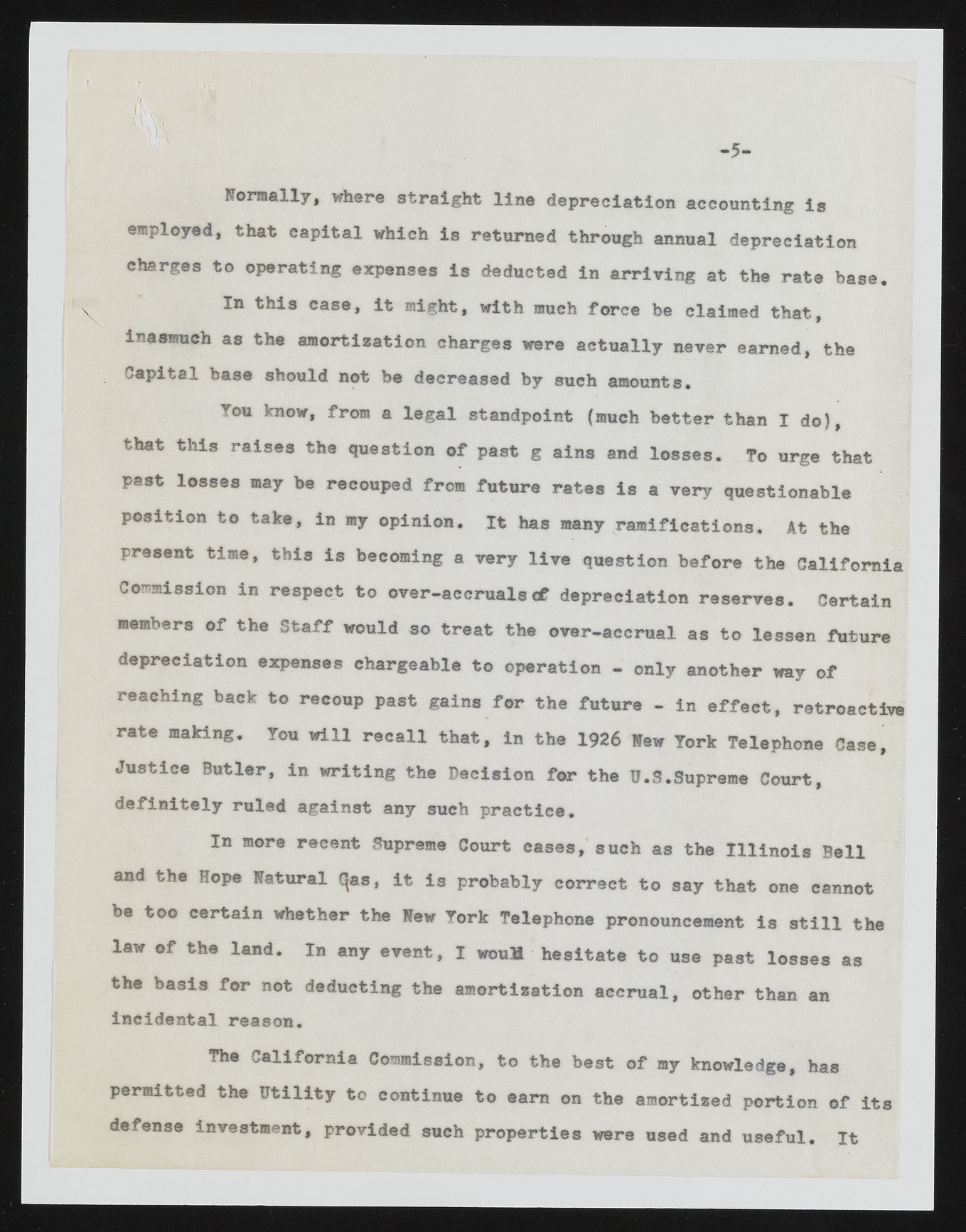Copyright & Fair-use Agreement
UNLV Special Collections provides copies of materials to facilitate private study, scholarship, or research. Material not in the public domain may be used according to fair use of copyrighted materials as defined by copyright law. Please cite us.
Please note that UNLV may not own the copyright to these materials and cannot provide permission to publish or distribute materials when UNLV is not the copyright holder. The user is solely responsible for determining the copyright status of materials and obtaining permission to use material from the copyright holder and for determining whether any permissions relating to any other rights are necessary for the intended use, and for obtaining all required permissions beyond that allowed by fair use.
Read more about our reproduction and use policy.
I agree.Information
Digital ID
Permalink
Details
More Info
Rights
Digital Provenance
Publisher
Transcription
Normally, where straight line depreciation accounting is employed, that capital which is returned through annual depreciation charges to operating expenses is deducted in arriving at the rate base. In this case, it might, with mueh force be claimed that, inasmuch as the amortization charges were actually never earned, the Capital base should not be decreased by such amounts. You know, from a legal standpoint (much better than I do), that this raises the question of past g ains and losses. To urge that past losses may be recouped from future rates is a very questionable position to take, in my opinion. It has many ramifications. At the present time, this is becoming a very live question before the California Commission in respect to over-accruals of depreciation reserves. Certain members of the Staff would so treat the over-accrual as to lessen future depreciation expenses chargeable to operation - only another way of reaching baek to recoup past gains for the future - in effect, retroactive rate making. You will recall that, in the 1926 Hew York Telephone Case, Justice Butler, in writing the Decision for the B.S.Supreme Court, definitely ruled against any such practice. In more recent Supreme Court eases, such as the Illinois Bell and the Hope Natural qas, it is probably correct to say that one cannot be too certain whether the New York Telephone pronouncement is still the law of the land. In any event, I wouH hesitate to use past losses as the basis for not deducting the amortization accrual, other than an incidental reason. The California Commission, to the best of my knowledge, has permitted the Utility to continue to earn on the amortized portion of its defense investment, provided such properties were used and useful. It

